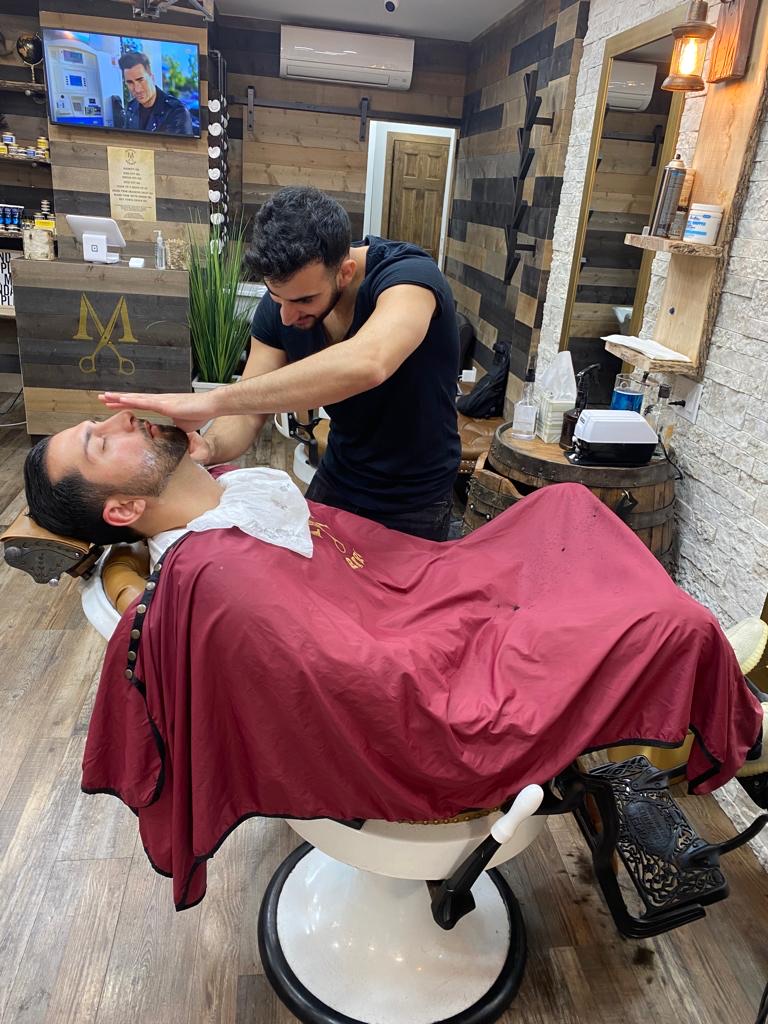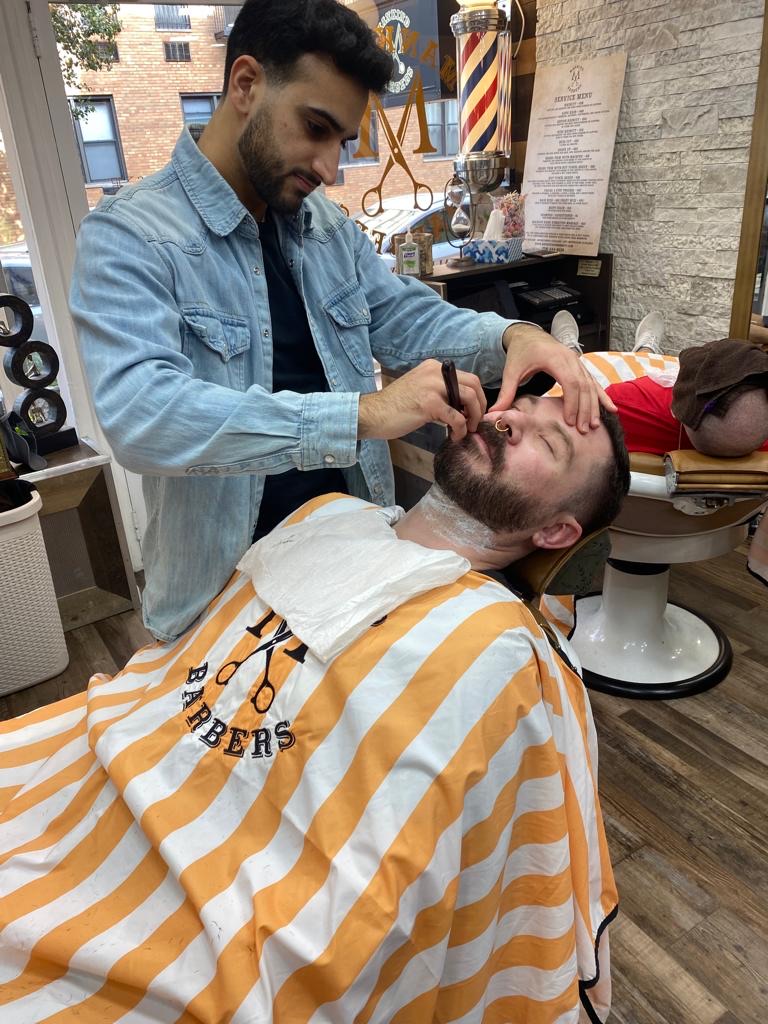Frequently Asked Questions
Using straight razors for precision beard shaping in barbershops offers numerous advantages that enhance the overall grooming experience. The sharp, single blade of a straight razor allows barbers to achieve an unparalleled level of detail and accuracy, making it ideal for intricate beard lines and contours. This tool provides a close shave, reducing the risk of irritation and razor burn, which is particularly beneficial for clients with sensitive skin. Additionally, the weight and balance of a straight razor enable barbers to execute smooth, controlled strokes, resulting in clean edges and defined shapes that elevate the client's appearance. The traditional technique of straight razor shaving also fosters a sense of craftsmanship and artistry, as barbers can customize each cut to suit individual facial features and personal styles. Furthermore, the use of a straight razor promotes a sustainable grooming practice, as it eliminates the need for disposable cartridges, aligning with eco-friendly values. Overall, the precision, control, and artistry associated with straight razors make them an indispensable tool in the realm of professional beard shaping.
The use of straight razors in a shave service significantly enhances the overall customer experience by providing a unique blend of precision, tradition, and luxury. The meticulous craftsmanship involved in wielding a straight razor allows barbers to achieve an exceptionally close shave, minimizing irritation and maximizing comfort. This traditional grooming method evokes a sense of nostalgia and authenticity, appealing to clients who appreciate the artistry of classic barbering techniques. The ritualistic nature of a straight razor shave, often accompanied by warm towels, soothing pre-shave oils, and rich lathering creams, creates a multisensory experience that elevates relaxation and indulgence. Furthermore, the personalized attention and skillful execution by the barber foster a strong client-barber relationship, enhancing trust and satisfaction. Overall, the incorporation of straight razors into shave services not only delivers superior results but also transforms the grooming session into a memorable and luxurious experience.
To ensure straight razors remain in optimal condition within a barbershop, several essential maintenance practices must be diligently followed. Regular honing is crucial, utilizing a high-quality whetstone or honing strop to maintain the razor's edge, ensuring a sharp and precise cut. After each use, thorough cleaning with warm water and a mild antiseptic solution prevents the buildup of hair, skin oils, and bacteria, which can compromise hygiene and performance. Additionally, applying a light coat of mineral oil or razor oil to the blade after cleaning protects against rust and corrosion, preserving the integrity of the steel. Storing the razors in a dedicated, dry environment, preferably in a protective case or strop, minimizes exposure to moisture and potential damage. Periodic inspection for nicks, chips, or signs of wear is also vital, allowing for timely repairs or professional sharpening, thereby extending the lifespan and efficacy of the straight razors in the barbershop setting.
The use of straight razors in shaving services significantly impacts the duration of the grooming process compared to safety razors, primarily due to the intricate techniques and skills required for effective execution. Straight razors necessitate a higher level of precision and control, as barbers must maintain the correct angle and pressure to achieve a close shave while minimizing the risk of nicks and cuts. This meticulous approach often results in a more time-consuming experience, as the barber engages in multiple passes over the skin to ensure an even and smooth finish. In contrast, safety razors, designed with built-in guards, allow for quicker strokes and a more straightforward application, enabling barbers to complete the service in a shorter timeframe. Additionally, the preparation and maintenance of straight razors, including honing and stropping, further contribute to the overall time investment in the shaving service, making it a more elaborate ritual compared to the efficiency offered by safety razors.
Barbers should implement a comprehensive set of safety measures when using straight razors to minimize the risk of accidents and ensure client safety. First and foremost, maintaining a sharp blade is crucial, as dull razors can lead to excessive pressure and potential slips, increasing the likelihood of nicks and cuts. Additionally, barbers should utilize proper grip techniques and body positioning to maintain control over the razor, ensuring that the blade is always angled away from the client's skin. Employing a steady hand and practicing slow, deliberate strokes can further enhance precision during the shaving process. Furthermore, barbers should prioritize hygiene by sterilizing tools before and after each use, thereby preventing infections. It is also essential to create a distraction-free environment, as external interruptions can lead to lapses in concentration. Lastly, barbers should be trained in first aid and emergency response protocols to address any unforeseen incidents promptly, reinforcing a culture of safety within the barbershop.

